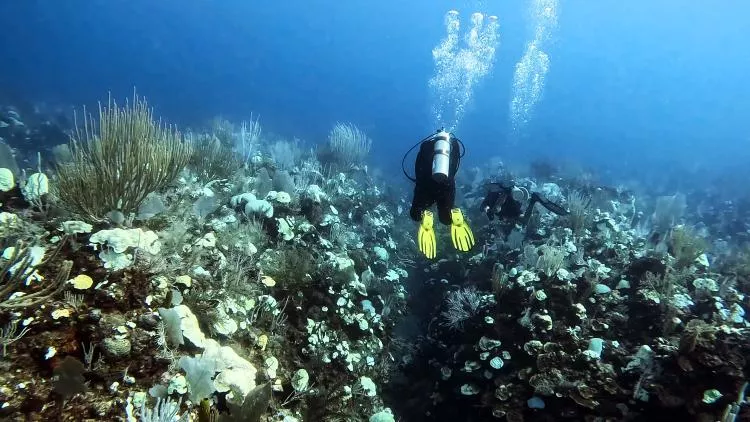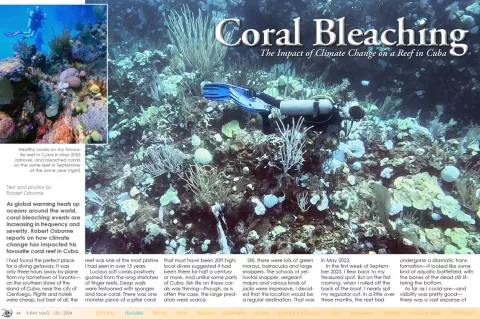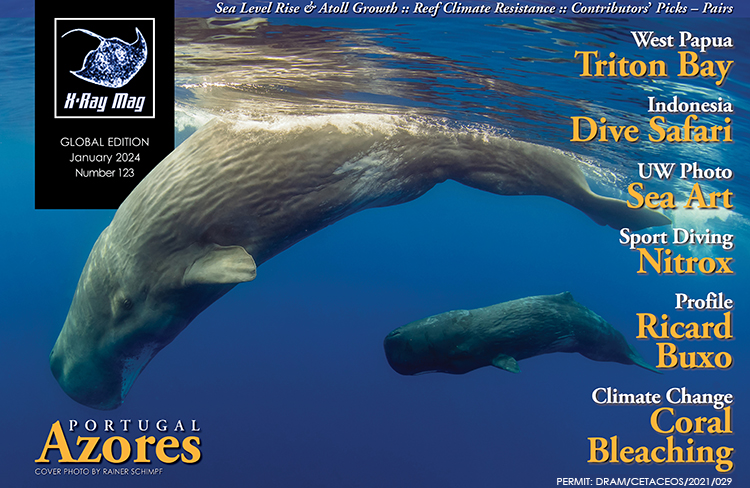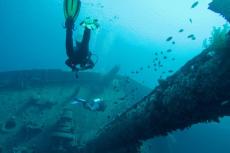As global warming heats up oceans around the world, coral bleaching events are increasing in frequency and severity. Robert Osborne reports on how climate change has impacted his favourite coral reef in Cuba.
Contributed by
I had found the perfect place for a diving getaway. It was only three hours away by plane from my hometown of Toronto—on the southern shore of the island of Cuba, near the city of Cienfuego. Flights and hotels were cheap, but best of all, the reef was one of the most pristine I had seen in over 15 years.
Lucious soft corals positively gushed from the long stretches of finger reefs. Deep walls were festooned with sponges and lace coral. There was one monster piece of a pillar coral that must have been 20ft high; local divers suggested it had been there for half a century or more. And unlike some parts of Cuba, fish life on these corals was thriving—though, as is often the case, the large predators were scarce.
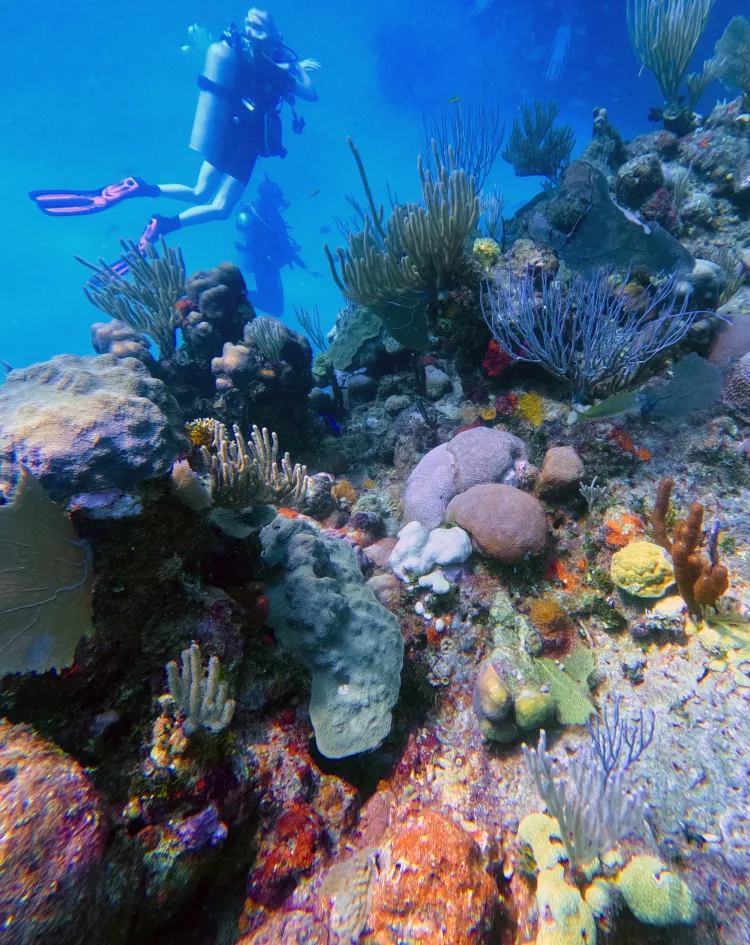
Still, there were lots of green morays, barracuda and large snappers. The schools of yellowtail snapper, sergeant majors and various kinds of jacks were impressive. I decided that this location would be a regular destination. That was in May 2023.
In the first week of September 2023, I flew back to my treasured spot. But on the first morning, when I rolled off the back of the boat, I nearly spit my regulator out. In a little over three months, the reef had undergone a dramatic transformation—it looked like some kind of aquatic battlefield, with the bones of the dead still littering the bottom.
As far as I could see—and visibility was pretty good—there was a vast expanse of bleached coral covering the bottom. By my estimate, almost half of the corals had been affected. A further 20 percent was in the process of “paling” (essentially starving to death).
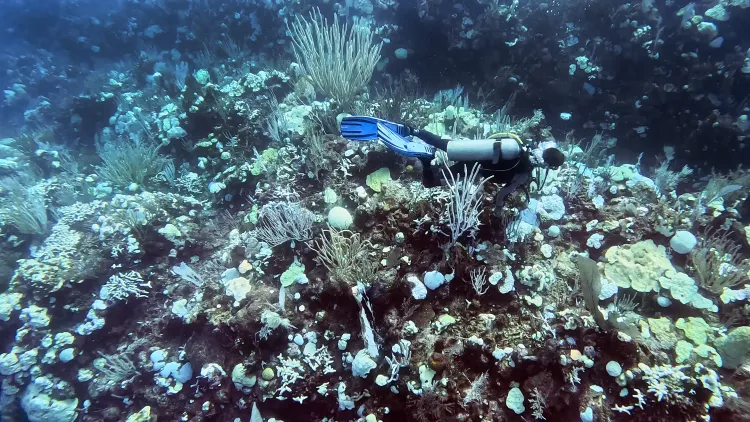
I could not believe what I was seeing. I knew there had not been any major chemical spills in the area, and agricultural run-off was not an issue—there is not much farming in the area. I started thinking this might be the most direct example of global warming that I had ever personally observed.
Of course, I have seen the floods and fires on television, but that was somewhat removed. This was right in my face. But I did not want to jump to conclusions. So, I decided to do some research, which would tell me more about what I was seeing.
Coral Reef Watch
When I got back to Toronto, I reached out to the National Oceanic and Atmospheric Administration (NOAA) in the United States. I have corresponded with them in the past on ocean-related research, and their scientists, who are among the best in the world today, are open to questions. They also run extensive reef research in the Caribbean, so I thought they would have a good idea about what was going on.
I got a very quick response from Jacqueline De La Cour, the operations manager of NOAA’s Coral Reef Watch. The staff at Coral Reef Watch seemed to be exactly the people I needed to talk with. On the Coral Reef Watch website, it states: “For more than 20 years, NOAA Coral Reef Watch (CRW) has been using remote sensing, modeled, and in situ data to operate a decision support system to help resource managers (our target audience), researchers, decision makers, and other stakeholders around the world prepare for and respond to coral reef ecosystem stressors, predominantly resulting from climate change and warming of the Earth’s oceans.”1
My first question to De La Cour was how could this coral bleaching have happened so quickly? The reef was perfect in May and half-dead by the end of August.
But according to De La Cour, it had not happened quickly: “… the current marine heatwave around Cuba has already been severe and prolonged. Heat stress has been accumulating for months. Additionally, the marine heatwave is projected to remain for another nine to 12 weeks. Mass coral bleaching and some mortality are expected under stressful conditions such as these.”
In other words, this event had been building for some time, and NOAA had been watching it. What I saw was just the final small incremental increase in temperature that tipped the whole ecosystem over the brink. And apparently, it does not take much to do that.
When I was diving in May, my computer logged temperatures of 28°C, pretty much on every dive. When I went back in August and September, the average log temperature was 30 or 31°C. That is not much of a change, but according to NOAA, it is enough.
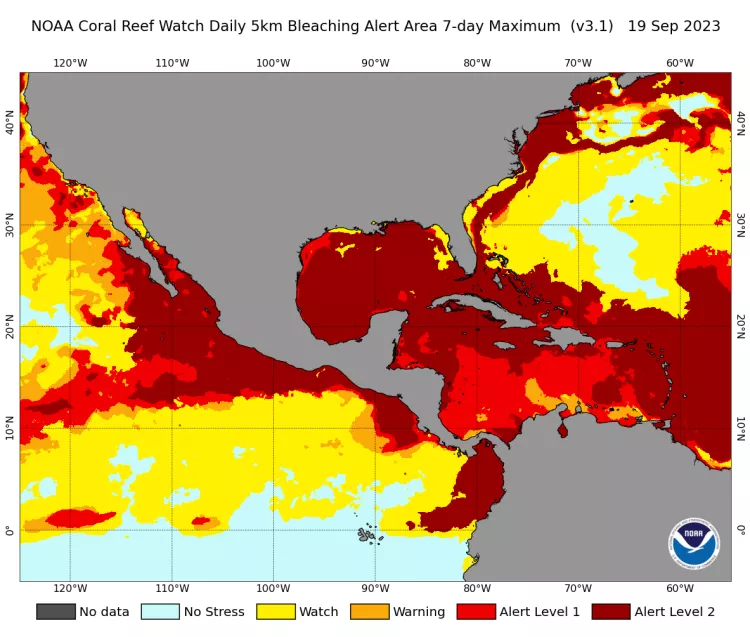
De La Cour stated: “Coral bleaching is expected to begin when water temperatures cross the bleaching threshold, when temperatures reach at least 1°C above the usual summertime maximum … If you look at the time series graph for the NOAA Coral Reef Watch satellite-based Regional Virtual Station for southwestern Cuba, you will see that the [normal] temperature for the region is 29.6643°C, and the bleaching threshold temperature is 30.6643°C … The sea surface temperature crossed the bleaching threshold on June 15, 2023… Bleaching Alert Level 2 conditions (where severe coral bleaching and mortality are expected) were reached on July 17. Since July 17, severe heat stress has continued to accumulate in the region, and the sea surface temperature has remained firmly above the bleaching threshold.”
De La Cour went on to say, “It is very sad, but similar conditions are being witnessed on multiple other reefs around Cuba.”
So, the whole situation off the southern coast of Cuba had been building all summer. Once the temperatures crossed that critical mark of 30.6643°C, the coral started dying. Interestingly, local divers told us that the die-off had occurred very quickly during the month of August. That was when the coral all started turning white.
About coral bleaching
Now, before I go any further, I want to explain just what happens when corals bleach. It is not exactly dying; it is more about corals being abandoned by the algae they depend on to survive (see graphic).
Healthy corals have a symbiotic relationship with the microscopic algae that lives in their tissues. These algae feed the coral and provide its colour. When the coral comes under stress from overheating (or other causes like agricultural pollutants), the algae leave the coral. Without the algae, the coral turns white or very pale and essentially starts to starve. Corals can survive for a short time without the algae, but ultimately, they need them to return to thrive.
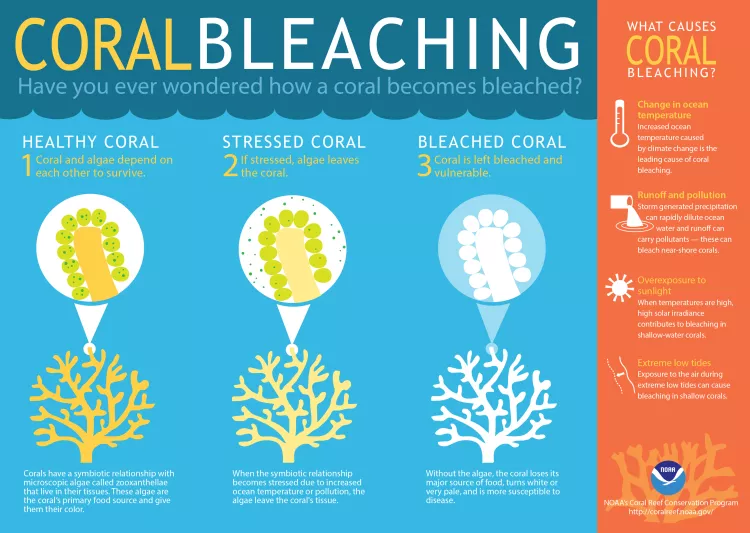
The value of reefs
Now, this is bad news, given that corals have a critical role to play, both environmentally and economically, in the world today. Some estimates place the economic value of reefs worldwide as being around 9.8 trillion US dollars. It is estimated that a billion people around the world benefit, either directly or indirectly, from coral reefs.
Coral reefs support the most diverse fish life on the planet and play a critical part in flood control in tropical coastal areas. The killing of reefs, and its echo effect, will be devastating for thousands of other species—most particularly, people.
Why coral bleaching occurs
Having learnt what had happened, I asked De La Cour the proverbial million-dollar question: Why had it happened? Could this event be linked to global warming? De La Cour was cautious, “There are a number of factors at play here, including the current El Niño, anthropogenic climate change and accelerated global warming … Together, these are driving the severe marine heatwaves being witnessed and subsequent impacts to coral reefs, including those of Cuba.”
I appreciated her caution, but NOAA posts statements elsewhere on its website that affirm that “climate change is the greatest global threat to coral reef ecosystems. Scientific evidence now clearly indicates that the Earth’s atmosphere and ocean are warming, and that these changes are primarily due to greenhouse gases derived from human activities.”2
In addition, a quick check found that the World Wildlife Fund for Nature website states: “The leading cause of coral bleaching is climate change. A warming planet means a warming ocean, and a change in water temperature—as little as 2 degrees Fahrenheit—can cause coral to drive out algae.”3 And, the Great Barrier Reef Foundation, which has been dealing with the issue for a number of years, states: “Rising ocean temperatures caused by climate change is the primary cause of coral bleaching.”4
The bottom line is that, almost certainly, climate change is responsible for what is going on with my favourite reef in Cuba. There may be other factors at work, but a warming planet is the primary one.
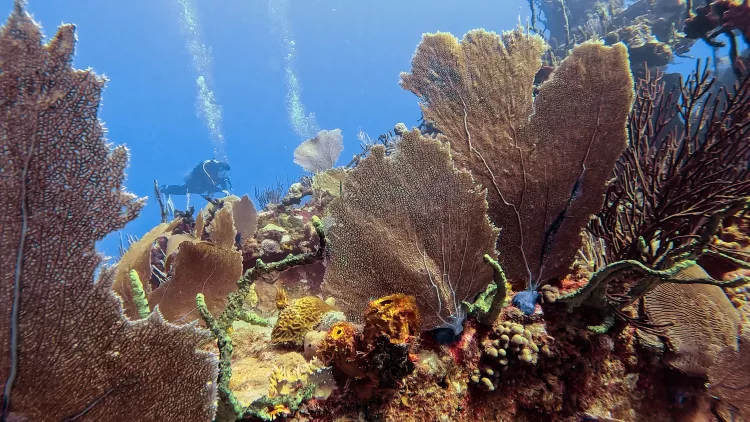
Recovery
However, there is a glimmer of hope—corals can recover from these events. It has happened before. Australia has had some success with reef recovery, and there is no reason why Cuba could not have the same good news in the future. “Corals can recover from bleaching, if the heat stress subsides, but the corals that are able to recover will have impaired growth, reproduction, and be susceptible to disease for about two to four years after recovery,” according to NOAA Coral Reef Watch Director, Derek Manzello.5
Essentially, the corals around Cuba need a break. They need the water to cool down a degree. It is possible with the cooler months of fall and winter that they will get that break. This will start the recovery process. The real question will be next summer. Will the temperatures once again rise above that critical level?
I will be going back to Cuba early in the year to see how cooler waters have impacted the coral and will probably also go back during the summer to keep an eye on the reef. Regardless of the impact on the coral, I will still go back to dive this area.
There are still some nice walls to explore, and the sponges and some species of coral that live in deeper waters have not been affected as much. There is lots of fish life to watch, and the wrecks and coral canyons are superb dives. It is still worth the trip. Meanwhile, I will keep my fingers crossed that the coral recovers. ■

